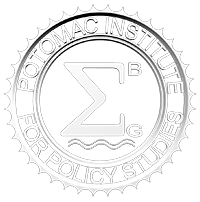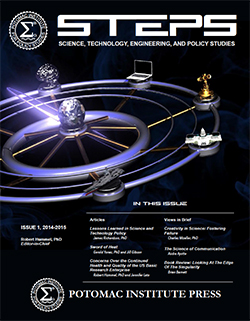A World-Wide Framework to Foster A Prosperous Climate
- Details
- Published: Thursday, 18 February 2016 16:09
- Written by STEPS
- Hits: 2918
2015 was the hottest year to date, and Earth’s temperature continues to rise. Now, for the first time ever, 195 countries across the world have agreed to an environmental treaty known as the Paris Agreement under the United Nations Framework Convention on Climate Change. The main objective, along with maintaining sustainable development, is to hold the increase in global temperature to 1.5°C. In order to achieve this goal, we must virtually halt emitting greenhouse gasses into the air by the year 2060 according to “A Reader’s Guide to the Paris Agreement” (Dec 16, 2015 The Atlantic). The rate of our current emissions productions has led to the critical need for finding a method of removing carbon dioxide from the air through so-called “negative emissions” technologies, noted by Knutti, et al. in “A Scientific Critique of the Two-degree Climate Change Target.” (Nature Geoscience, 2016; 9:13-18) While negative emissions are not mentioned explicitly throughout the text of the Agreement, it is certainly a noticeable undertone. See: https://unfccc.int/resource/docs/2015/cop21/eng/l09r01.pdf.
Neuroprosthetics Successfully Meet the Posterior Parietal Cortex
- Details
- Published: Thursday, 18 February 2016 16:08
- Written by STEPS
- Hits: 7346
In a remarkable case from May 2015, a quadriplegic man successfully played a game of tic-tac-toe utilizing neuroprosthetics- specifically, robotically programmed prosthetic arms (Controlling a Robotic Arm with a Patient’s Intentions - Caltech News May 21, 2015). A trial led by Richard Anderson and colleagues investigated the capabilities of the posterior parietal cortex (PPC) in executing motor function. The PPC plays a pivotal role in producing planned movements and receives input from the visual, auditory, and somatosensory systems. These initial intentions are subsequently transmitted from brain to spinal cord and, finally, to the arms and legs where the motion is completed. Many previous applications of neuroprosthetics involving the use of small electrodes and brain wirings to record signals from the motor cortex proved defective, as such signals were extensively detailed and too complex. Anderson and his team have focused on simplifying the message. Using the simpler signals recorded from the PPC, Anderson anticipated patients would find the task more intuitive, thus yielding more successful motor operation. As soon as day one after surgical recovery, the patient was able to control the limb. Results bring great hope of improved quality of life for paralyzed patients. See: Richard A. Anderson, “Decoding Motor Imagery from the Posterior Parietal Cortex of a Tetraplegic Human.” Science Magazine May 22, 2015: 906-10. http://authors.library.caltech.edu/54866/.
FAA Gives the OK for Unmanned Aircraft Systems
- Details
- Published: Thursday, 18 February 2016 16:06
- Written by STEPS
- Hits: 2979
The Federal Aviation Administration (FAA) has officially announced its rules and regulations to drone registration in efforts to maintain aerial security. As Unmanned Aircraft Systems (UAS), or “drones” become increasingly popular for avid consumers and military personnel, the FAA revealed updated measures, effective December 21, 2015. For example, anyone in possession of a small UAS (the category weighing 0.55lb-55lb) is directed to register with the FAA UAS registry before they fly outdoors. Individuals who have already flown drones of this weight category must register by February 19, 2016. In a Bard College study, researchers categorized 921 recorded UAS encounters from 2013-2015 into: Sightings and Close Encounters. Sightings were defined as “a pilot… spotted a drone flying within or near the flight paths of manned aircraft though not posing an immediate threat…,” and Close Encounters were occurrences “where a manned aircraft came close enough to a drone that it met the (FAA’s) definition of a ‘near midair collision’ or close enough that there was a possible danger of collision…” The study concluded that 35.5% of the recorded cases were Close Encounters and 64.5% were Sightings. Furthermore, 90% of the recorded events showed the UAS went above 400 ft., the maximum height allotted to any UAS. Many industry officials are skeptical of the new FAA regulations, while FAA advisers assure that the actions being taken are simply to bolster national security. See: http://dronecenter.bard.edu/files/2015/12/12-11-Drone-Sightings-and-Close-Encounters.pdf.
As Nanotechnology Reaches Below Sea Level, Regulations Aren’t so Deep
- Details
- Published: Thursday, 18 February 2016 16:03
- Written by STEPS
- Hits: 3643
One of the most highly sought after technologies is nanotechnology. The frequently evolving nature of nanotechnology innovation has heightened questions as to whether the regulations governing nanomaterials are sufficient in determining safety, while also fostering uninhibited field growth. In November of 2015, scientists at Rice University developed a nanosubmarine with a light-reactive motor modeled after a bacteria flagellum, as opposed to more traditional propellers (“Unimolecular Submersible Nanomachines. Synthesis, Actuation, and Monitoring” Garcia-Lopez, et al. Nano Lett 2015;15(12):8229–8239). This development demonstrates promising insight into unique research methods, new approaches to transferring medicine, and potential advancements in locating renewable energy sources. While the Obama Administration has continuously encouraged advancements in nanotechnology, the regulatory sphere has voiced safety concerns. In an April 2015 proposed rule that would be included in the Toxic Substances Control Act, the US Environmental Protection Agency has proposed reporting requirements that include one-time reporting for new and existing individual nanoscale materials before they are manufactured or processed. See: http://www.regulations.gov/#!documentDetail;D=EPA-HQ-OPPT-2010-0572-0001
Cyber Readiness Index (CRI) 2.0
- Details
- Published: Thursday, 18 February 2016 16:02
- Written by STEPS
- Hits: 12788
No country is cyber ready. It is a given that global economic growth is increasingly dependent upon the rapid adoption of information communication technology (ICT) and connecting society to the Internet. Indeed, each country’s digital agenda promises to stimulate economic growth, increase efficiency, improve service delivery and capacity, drive innovation and productivity gains, and promote good governance. Yet, the availability, integrity, and resilience of this core infrastructure are in harm’s way. The volume, scope, velocity, and sophistication of threats to our networked systems and infrastructures are real and growing. Data breaches, criminal activity, service disruptions, and property destruction are becoming commonplace and threaten the Internet economy. Until now, however, there has not been a comprehensive, comparative, experiential methodology to evaluate a country’s maturity and commitment to securing its national cyber infrastructure and services upon which its digital future and growth depend. The Cyber Readiness Index (CRI) 2.0 provides a blueprint to objectively assess a country’s cyber capacity and maturity. The CRI 2.0 was released by Melissa Hathaway and her team at the Potomac Institute for Policy Studies in November 2015. The methodology builds off of the CRI 1.0 methodology developed by Hathaway in 2013. The CRI 2.0 evaluates 125 countries’ “cyber readiness” across seven essential elements: National Strategy, Incident Response, E-Crime and Law Enforcement, Information Sharing, Research and Development, Diplomacy and Trade, and finally Defense and Crisis Response. Hathaway brings over 20 years of cyber security national and international expertise to the CRI 2.0 team. Hathaway notes that “the CRI 1.0 was launched over two years ago and has influenced many countries around the world. We hope the CRI 2.0 has even broader impact.” See: https://www.potomacinstitute.org/images/CRIndex2.0.pdf


